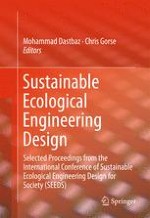2016 | OriginalPaper | Buchkapitel
25. Analyzing the Payback Time of Investments in Building Automation
verfasst von : Fisayo Caleb Sangogboye, Olaf Droegehorn, Jari Porras
Erschienen in: Sustainable Ecological Engineering Design
Aktivieren Sie unsere intelligente Suche, um passende Fachinhalte oder Patente zu finden.
Wählen Sie Textabschnitte aus um mit Künstlicher Intelligenz passenden Patente zu finden. powered by
Markieren Sie Textabschnitte, um KI-gestützt weitere passende Inhalte zu finden. powered by
